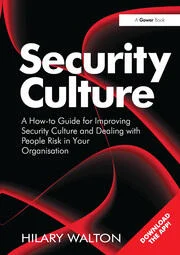Asset Integration: Before They Set Sail

Tom Conaway
The recent controversy over ownership of terminals at U.S. ports has reinvigorated the port security debate in the United States. For some, the issue never left the foreground. For others, the debate reminded them that potentially serious problems still exist. However the issue is parsed, it is clear that the debate must be broadened to address a much wider range of potential threats to the international supply chain and the global economy.
At each segment along the supply chain, there are vulnerabilities and risks – some greater than others. Fortunately, the U.S. is taking steps to mitigate these risks through programs like the Customs-Trade Partnership Against Terrorism (C-TPAT) and the Container Security Initiative (CSI), as well as executing a risk-based process for targeting cargo for physical inspection. Yet, if we are going to re-engage in a public debate about port security, we must widen the scope to address all participants in the supply chain – not just the final step of terminal operations inside the United States.
People: the weakest link
More than 9.7 million shipping containers enter the United States each year. Clearly, the challenge is to make sure that none of them contains anything that we don’t want inside our borders. Sure, a weapon of mass destruction is the mother of all threats, but there are plenty of other cargoes that we want to interdict. The problem is that the supply chains that bring these containers to our shores are so long and complicated that they provide ample opportunity for containers to be touched by a range of people as they make their journey.Who are these people, and how do we know that they don’t pose a potential threat to our homeland and economy?
A cargo shipment begins its journey when the container is loaded or “stuffed” at either the foreign manufacturing plant, in the case of a full container, or at the facility of an exporter that may consolidate multiple shipments into a single container. This is the initial point of vulnerability for a container because it is open and available to a potential so-called “bad actor” to turn a relatively benign shipment from a reputable supplier into a possible instrument of death and destruction. Not understanding precisely who has access to a container prior to sealing places increased risk on that shipment – no matter how protected the supply chain is for the rest of the container’s journey.
The next area of potential risk is the inland drayage of a container from the stuffing point to the port of lading. In this segment of the supply chain, relatively little is known about those responsible for transporting the container, nor is there much control over or information regarding the length of time the journey should take verses what it actually takes. Placing a shipment in the control of unfamiliar transporters for an unregulated period of time greatly increases the risk associated with that shipment.
Once a container arrives at the port of lading, the risk associated with the shipment either can increase or decrease dramatically relative to the:
- Security of the port environment itself,
- Continuous activity within the port; and
- Visibility of the container to a wide variety of personnel ranging from foreign government workers (e.g., Customs officials) to port workers (e.g., longshoremen, stevedores, terminal operators) to local police or military personnel and, in the case of a CSI port, U.S. Customs personnel.
This also would hold true at any intermediate ports where the container may be offloaded and reloaded onto another vessel bound for a U.S. port.
Aboard a ship, the container becomes the responsibility of the vessel’s captain and crew. However, the likelihood of a container being infiltrated at sea is greatly diminished because a very high percentage of containers are inaccessible. Attempting to penetrate them likely would be witnessed and would leave obvious visible signs that the container had been tampered with. In addition, crews on foreign vessels often require visas for entry into the United States and, in accordance with the “96-Hour Rule,” the ship’s master is required to submit a notice of arrival with the U.S. Coast Guard 96 hours prior to arrival in a U.S. port.
Sealing the gaps
The concern about security at and around ports is valid and should be addressed by governments, port operators and private sector entities, all of whom have a stake in the secure business operations of cargo shipping. Proposed solutions, however, must also attend to the dangers that can lurk long before a ship ever arrives at a U.S. port. Without this holistic approach to establishing visibility along every inch of the global supply chain, our ports will be susceptible to potential threats and acts of terrorism.Looking for a reprint of this article?
From high-res PDFs to custom plaques, order your copy today!








